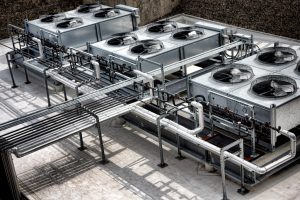Making energy-efficient changes to your home is touted as an effective way to lower monthly energy bills while reducing your carbon footprint. But how much money can you really save by making these changes? And is it even worth it? This short guide will explain the truth about energy-efficient savings.
What is energy efficiency?
Energy efficiency is the practice of using less energy while still achieving the same level of useful output. This can be achieved by making meaningful changes to your lifestyle and habits such as turning off your lights when not in use, air-drying your clothes rather than machine drying them, and investing in more energy-efficient appliances.
There are plenty of benefits to doing this, particularly when it comes to saving the environment. Making more energy-efficient choices will result in lower greenhouse gas emissions and a reduced amount of pollutants being released into the atmosphere. But a more immediate and direct benefit of these practices is that it can save you money in the long run.
How much money can you actually save?
While it’s impossible to give a definite figure on just how much you can save overall by adopting these habits, there are ways to break down what you can save based on what kind of changes you’re making. Here’s a short breakdown of the most common energy-efficient changes and what you can expect to save with them according to Energy Star:
Windows
You can lower your energy bill by 7% to 15% just by upgrading your windows. This can be done by either hiring someone to update your existing residential windows with reflective window film installation or completely replacing your windows with more energy-efficient ones. These changes work by reducing the heat or cold entering your home, thus making you rely less on your heating and cooling system. This will save you between $30 to $500 a year, depending on where you live and what materials you use.
Washing & Drying Machines
Washing and drying machines take up a lot of energy and water just to do one load of laundry, and the average family reportedly cycles through 300 loads of laundry per year. You can cut down on your usage by hand washing and air-drying your clothes instead, which will save you anywhere from $10 to $30 per load, depending on how long you usually leave your clothes in the machine. Shifting to an energy-efficient washer and dryer that uses 20% less energy than traditional models, can reduce your energy bill by 30% and your water bill by 50%, saving you almost $160 to $300 per year.
Light Bulbs
A simple yet effective way to lower your electric bill is by replacing traditional light bulbs with CFL or LED bulbs. They aren’t expensive to purchase and install, and they can reduce your energy usage by 30% to 80% compared to conventional bulbs. You can also opt to install solar panels on your home which can set you back between $10,000 and $25,000 in installation costs alone, but they do offer almost $100 in savings per electricity bill.
Air Conditioner

Replacing your existing air conditioner with a more cost-efficient model can save you around $75 a year. Running an electric fan provides even bigger savings. Where a typical household that uses an air conditioner can average almost $400 a month on energy costs, you can expect to pay only $50 or less a month by running a fan at high speed for several hours.
Additional energy-efficient changes to try out
The following are some simpler changes you can try out to lower your energy usage even more. All these small adjustments will add up to big savings in the long run.
- Purchase a power strip for your electronics. If you tend to forget about plugged-in devices and appliances, you’ll benefit from using a power strip. Instead of having to unplug them individually, you can simply unplug the power strip and all the attached devices in one go.
- Get an energy audit done on your home. An energy audit will evaluate how much energy your property uses, and reveal the areas of your home that may need a bit of improvement in terms of energy efficiency.
- Insulate your water pipes. Insulating your hot water pipes can keep your water warm, which means you won’t have to increase the temperature on your water heater. This helps conserve both energy and water.
- Limit the time of your showers. Save almost five gallons of water every day by limiting the time of your showers to just 5 to 10 minutes. You can make further reduce your water bill by avoiding long baths altogether.
- Plant trees and plants near your home. Trees and plants can offer your home shade in the summer which helps reduce your reliance on air conditioning by almost 15% to 50% a year. In the winter, they also provide excellent insulation from the cold.
As evidenced by these numbers, it seems that making more energy-efficient choices is worth it, both for the planet and for your wallet.






